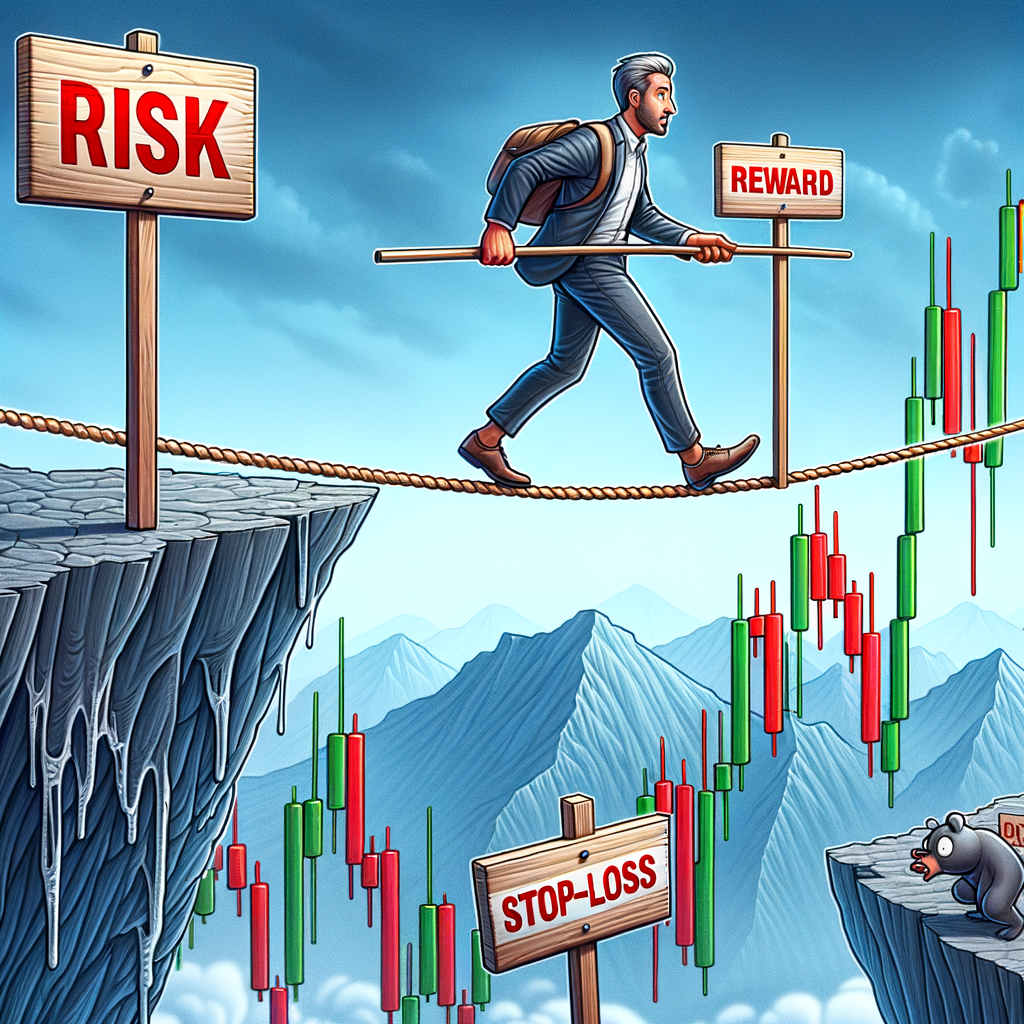Understanding Forex Drawdowns: A Trader’s Reality Check
Forex trading is not just about making profits; it also entails enduring losses. A drawdown refers to the reduction of one’s account balance from a peak to a trough, specifically illustrating the depth of losses experienced before achieving a new high. Understanding drawdowns is crucial as they serve as a reality check for traders. For example, a trader might enjoy a series of winning trades, only to face unexpected market movements that lead to significant losses. This natural fluctuation of account equity is part of a trader’s journey.
The size and duration of drawdowns can vary widely among traders based on their strategies and risk appetites. Some may experience minor drawdowns that last only a few days, while others may encounter deeper, prolonged ones. Recognizing these characteristics can help traders prepare emotionally and strategically for when they inevitably happen. It’s essential to have a clear understanding of one’s drawdown history, as this knowledge can inform future trading decisions and risk tolerance.
Additionally, understanding the market conditions that lead to drawdowns is vital. Economic news releases, geopolitical events, and changes in monetary policy can all contribute to increased volatility and unexpected market movements. By being aware of these factors, traders can develop more robust strategies to manage potential drawdowns effectively. Accepting that drawdowns are an inevitable part of trading can cultivate a more resilient and sustainable approach to the Forex market.
In summary, recognizing and accepting drawdowns as a normal aspect of trading helps traders maintain perspective. This understanding is foundational for implementing strategies that not only mitigate losses but also enhance the trader’s ability to bounce back stronger.
The Psychological Impact of Drawdowns on Traders
The psychological impact of drawdowns can be profound. Many traders experience anxiety, frustration, and even panic when faced with consecutive losses. This emotional turmoil can cloud judgment, leading traders to make impulsive decisions that might exacerbate their situation. The fear of losing more money often drives traders to alter their strategies, sometimes leading to the very outcomes they were trying to avoid.
Traders may also suffer from a phenomenon known as “loss aversion,” where the pain of losing outweighs the pleasure of winning. This mindset can cause traders to hold onto losing positions for too long or to exit winning trades prematurely, rationalizing that small profits are better than facing potential losses. Understanding this psychological barrier is critical for developing a healthier outlook on trading.
To combat the psychological impacts of drawdowns, traders should engage in self-reflection and develop emotional resilience. Keeping a trading journal can help identify emotional triggers that may influence trading decisions. By documenting both wins and losses, traders can gain insights into their psychological patterns, ultimately fostering a more objective approach to their trading performance.
Moreover, incorporating mindfulness practices, such as meditation and controlled breathing, can help traders manage stress and improve focus. This mental fortitude can ultimately enhance decision-making capabilities, allowing traders to navigate the complexities of the Forex market with greater ease.
Implementing Risk Management Strategies to Protect Capital
Effective risk management is the cornerstone of surviving drawdowns. Successful traders understand the importance of limiting potential losses before they occur. One fundamental strategy is to determine the appropriate position size based on account equity, risk tolerance, and stop-loss orders. Utilizing a fixed percentage risk per trade, often between 1% to 3%, can help protect capital over time.
Another essential aspect of risk management is implementing stop-loss orders to automatically exit trades that move against the trader’s position. This strategy not only curtails losses but also alleviates emotional stress by removing the need for constant monitoring of market movements. Traders should also ensure that their stop-loss levels are set strategically, considering market volatility and key support or resistance levels.
Additionally, diversification of assets can play a significant role in risk management. Rather than focusing solely on one currency pair, traders can spread their risk across multiple pairs or even different asset classes. This diversification can help minimize losses during market downturns, as not all assets will react the same way to economic events or market movements.
Lastly, regularly reviewing and adjusting risk management strategies based on market conditions is crucial. As market volatility changes, so too should the approach to risk management. By staying adaptable and informed, traders can protect their capital and enhance their chances of long-term success.
Diversifying Your Trading Strategy to Minimize Losses
Diversification is not only an investment principle; it is also a crucial strategy for Forex trading. By diversifying their trading strategy, traders can minimize losses and reduce the overall impact of drawdowns. This can be achieved by employing multiple trading styles or timeframes, such as scalping, day trading, and swing trading, to capture various market movements.
One effective approach to diversification is to include different currency pairs in a trading portfolio. Each currency pair has unique characteristics and responds differently to economic news or geopolitical events. By trading pairs that are not closely correlated, a trader can mitigate the risk of simultaneous losses, ensuring that a downturn in one area does not decimate the entire account.
Moreover, integrating technical and fundamental analysis can provide a more holistic view of the markets. While technical analysis focuses on price patterns and indicators, fundamental analysis evaluates economic indicators and news events. By combining these two approaches, traders can develop a more comprehensive strategy that accounts for various market scenarios.
Lastly, continuously testing new strategies through backtesting and demo trading can lead to greater diversification. By refining and adapting strategies based on historical data, traders can build a robust trading plan that is less susceptible to significant drawdowns.
Maintaining Discipline: Key to Surviving Market Fluctuations
Discipline is often cited as one of the most crucial traits for a successful trader. During drawdowns, it becomes even more imperative to adhere to a well-defined trading plan. Maintaining discipline means following established rules regarding entry and exit points, managing risk, and avoiding revenge trading. Deviating from these principles can lead to a downward spiral of losses.
A well-structured trading plan should include specific guidelines that detail how to respond to drawdowns. For instance, a trader may determine that if the account experiences a drawdown exceeding a certain percentage, they will take a break from trading to recalibrate their strategy. This practice not only preserves capital but also allows for a clearer mindset upon returning to the market.
Additionally, setting realistic trading goals can help traders maintain discipline. By focusing on long-term growth rather than short-term gains, traders can avoid the pitfalls of emotional decision-making. Establishing achievable goals encourages patience and reinforces the importance of sticking to a proven trading strategy.
Lastly, creating a support network either through trading communities or mentorship can help traders maintain discipline. Sharing experiences with others who understand the challenges of trading can provide accountability and encouragement during difficult times. This support can be invaluable in fostering a disciplined approach to trading.
Analyzing Performance: Learning from Past Drawdowns
Analyzing performance is a crucial step in overcoming drawdowns. After experiencing a significant loss, traders should conduct a thorough review of their trading activities during that period. This analysis can reveal patterns or mistakes that may have contributed to the drawdown, providing valuable insights for future trading decisions.
One effective method for performance analysis is maintaining a detailed trading journal. This journal should document each trade’s rationale, market conditions, and emotional state at the time of the trade. By reviewing this information, traders can identify recurring mistakes, such as over-leveraging or ignoring stop-loss orders, enabling them to make necessary adjustments to their trading approach.
Furthermore, utilizing performance metrics, such as the win-loss ratio and average return per trade, can provide a quantitative assessment of a trader’s strategy. A clear understanding of these metrics can help traders refine their strategies and set more realistic expectations. Regularly revisiting and updating these benchmarks ensures that a trader remains on track, even during challenging periods.
Lastly, learning from past drawdowns can cultivate resilience. Acknowledging that losses are part of the trading journey empowers traders to bounce back and continue improving their skills. By fostering a growth mindset, traders can view setbacks as opportunities for development rather than as insurmountable failures.
The Role of Emotion: Staying Calm Under Pressure
Emotional control is vital for successful trading, especially during drawdowns. When faced with losses, traders often experience heightened emotions, such as fear, greed, and frustration. These feelings can cloud judgment and lead to impulsive decisions that worsen the situation. Recognizing the role of emotion in trading is crucial for maintaining composure under pressure.
To manage emotions effectively, traders should develop a pre-trade routine that includes mental preparation. This routine can involve visualization techniques, affirmations, or relaxation exercises, all geared towards fostering a calm and focused mindset. By entering the trading day with a clear mental state, traders are more likely to make rational decisions, regardless of market fluctuations.
Setting predefined rules for emotional responses can also aid in maintaining control. For instance, if losses exceed a specified threshold, the trader may choose to step away from the screen for a designated period, allowing emotions to settle before re-evaluating their positions. This practice can prevent hasty decisions driven by fear or frustration.
Additionally, engaging in regular self-assessment can help traders monitor their emotional state. By reflecting on how emotions influence trading decisions, traders can develop strategies to mitigate negative emotional impacts. Awareness and acceptance of one’s emotions can ultimately lead to improved decision-making and better trading outcomes.
Building a Resilient Mindset for Long-Term Success
A resilient mindset is essential for long-term success in Forex trading. Building this resilience involves cultivating a positive attitude towards challenges and setbacks. Rather than viewing drawdowns as failures, successful traders see them as opportunities to learn and grow. This shift in perspective is foundational for sustaining motivation and perseverance in the face of adversity.
To foster resilience, traders should focus on continuous learning. This can involve attending webinars, reading trading books, or engaging with trading communities. Staying informed about market trends and strategies allows traders to adapt their approaches, enhancing their ability to navigate drawdowns effectively.
Furthermore, adopting a growth mindset encourages traders to embrace challenges rather than avoid them. By recognizing that every setback is a chance to improve, traders can develop the tenacity needed to overcome obstacles. This resilience not only benefits trading performance but also enhances overall well-being and confidence.
Finally, prioritizing self-care is crucial for building a resilient mindset. Maintaining a healthy work-life balance, engaging in regular physical activity, and practicing mindfulness can significantly impact a trader’s emotional and mental state. By taking care of oneself, traders can approach the Forex market with clarity and strength, ultimately increasing their chances of long-term success.
| Strategy | Purpose | Benefits |
|---|---|---|
| Risk Management | Protect capital | Limits losses, enhances longevity |
| Diversification | Spread risk across assets | Minimizes impact of drawdowns |
| Discipline | Adhere to trading plan | Reduces emotional trading decisions |
| Performance Analysis | Learn from past trades | Identifies improvement areas |
| Emotional Control | Maintain composure under pressure | Improves decision-making |
| Resilience | Foster a positive mindset | Enhances long-term success |
Q&A Section
Q: What is a Forex drawdown?
A: A Forex drawdown is a reduction in a trader’s account balance from its highest point to its lowest point during a specified period.
Q: How can I manage psychological stress during drawdowns?
A: Engage in self-reflection, maintain a trading journal, and incorporate mindfulness practices to manage stress effectively.
Q: What risk management strategies should I implement?
A: Use position sizing, stop-loss orders, and diversification to manage risk and protect your capital.
Q: How does diversification help in trading?
A: Diversification spreads risk across different assets or strategies, minimizing the overall impact of drawdowns.
Q: Why is discipline important in trading?
A: Discipline helps traders adhere to their trading plan, reducing emotional decision-making and increasing the likelihood of long-term success.



‘Diversification’ seems like a smart idea for traders.
Thanks for explaining drawdowns. Makes sense now.
‘Building resilience’ is good advice for life too!
This was informative but a bit long.
I didn’t know drawdowns were so important. Interesting read.
‘Loss aversion’ sounds tough, but I see why it matters.
‘Analyzing performance’ sounds like a plan for improvement.
The tips on risk management are helpful.
‘Emotional control’ is something I need to work on.
Good to know about the psychological side of trading.